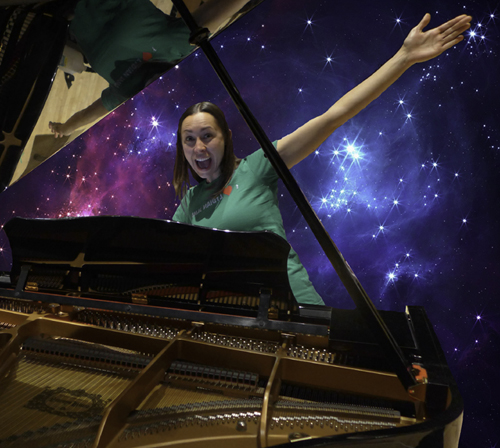
Holly Bowling loves Phish. It’s her devotion to the Vermont quartet that inspired the classically-trained pianist to transcribe and record Phish songs, both live and studio versions, for her new album Distillation of a Dream: The Music of Phish Reimagined for Solo Piano. Bowling took time away from her current tour to speak with us about the challenges of the recording, the inimitability that is Phish, and that now-legendary jam in Nevada that sparked this unique project.
Where did the idea come from to transcribe and record Phish songs for solo piano?
It was something that grew organically out of my experiences up until this point. I’ve played classical piano for years and years, and I’ve seen a lot of Phish shows. Those two things just kind of came together.
What was the first piece you tackled?
It started with the Tahoe “Tweezer,” which is kind of a funny starting point. It’s not exactly a starter song. I was at that show (7/31/13), and fell in love with the jam. I started working out bits and pieces of it on the piano, just for fun. The project just grew from there.
Was there something in your classical training that helped in the process of transcribing a band that is as improvisational as Phish?
I learned by the Suzuki method. It really focused on ear training. You learn to play songs by hearing them first. You don’t even learn to read the score until a few years in.
Did you ever look at someone else’s scores or transcriptions as a reference?
I didn’t reference anyone else’s scores or printed charts. Anytime you are arranging there are lots of different directions you can go, even if you are trying to remain very literal and very true to the original. I wanted those decisions to be mine and not influenced by someone else. The other part is I really enjoy the process of transcribing songs, arranging them, and learning them by ear. Each one of these songs, to me, is an awesome puzzle to learn and unlock. I love that process.
Phish, particularly in its composed repertoire, has been known to chart out each of the four parts. How did you fit four parts into two hands?
That is a great question. I have some videos online where I show how you can get three of the melodic lines into two hands. I don’t transcribe Fishman’s (drum) part. If I’m taking Page’s (piano) chords and harmonies in the left hand, and maybe Trey’s guitar line in the right, I can take some of the rhythms that Fishman’s doing and I can put those in the left hand.
Where is your divide between scoring and what’s left up to the emotion of the moment?
I’ve listened to this music so much. When I’m playing live and I’m doing some of those jam teases, and other more loose interpretations of their music, that is completely unscored and very emotive- a very different question between the live setting and what things were when I was recording the record.
When you approached a song to transcribe, did you use the studio version or the live version as a reference point?
For the tracks on the album, most of them I went from the studio version, although I’ve listened to all those songs many more times either live or on live recordings. The studio versions are easier because the audio quality is so good. You can really pick out each part. The live versions are influencing things, as well.
When using a live version, did you compare eras? As we both know, it’s never the same way once, let alone twice, with Phish performances.
It’s not like I’ve sat down and said, Let’s listen to forty different “Tweezer” versions and compare them from year to year. Although that sounds like a great way to spend a Sunday afternoon. I’ve done a lot of stuff from (Phish era) 3.0, and from the last three years in particular. I haven’t delved into the other eras as much because the style of jamming hasn’t been as conducive to (solo) piano.


No Comments comments associated with this post